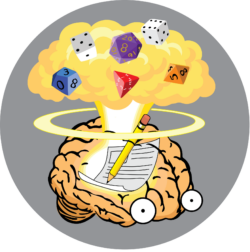Short Bursts vs Long bursts is more about how much “attention” and “tunneling” we allow ourselves in a situation. My current learning is that I need to be able to use the time “between attention cycles”.
What happens is that I “attack” or act, with the anticipation of a desired result. I “wait” to see if the shot hits, – that fraction of a second is better re-conditioned for adjustment fire.
How do I re-adjust without feedback? Now this is the “main gap of the matter” we adjust to information, but to adjust without information is foolish. The thing is there is information in the “rhythm of the situation” or information from the situation and not just if our BB’s land.
Note that it helps to try to re-imagine what I’m saying not just in the context of the Game but as we approach problems and challenges. Example is when I order my son to eat his food, I should not just order and wait for him to react and decide on the best outcome from his feedback, but to look at the situation’s wider context/bigger picture.
I suggest or act or attack, I condition myself to do the following before feedback arrives:
- go through a series of crucial evaluative questions:
- Is he the only enemy
- How many are we fighting
- What are the Threat areas to avoid,
- What rhythm
- ask emphatic questions would be:
- how would I react if positions were reversed
- what are the consequences I want to happen
- what are the consequences I don’t want to happen
- and every field specific self evaluative questions.
We do many of this in the things we are already good at. Every action has some of these evaluative methods that draws much needed context in our approach to problem but the exercise is how we take it into other elements – like reacting to battle field conditions.
When I will begin my Heavy Combat Sparring, I believe this lesson – to “reflect” between strikes will be very important as I practice every strike against the Punching bag. Every strike I ask myself my stance, its weaknesses, and how I will fail to defend – imagining the worse blows along with all the probable blows to me when I make my strikes.
In Negotiations, Discussion, and Pretty much everything I can think off ever action, before feedback arrives, has its own self evident answers. A deeper answer is “why are we pursuing and committing to this line of action in the first place” – it seems our very doubt between instances of time grants the benefit of insight.
This hopefully gives you an idea of what internal cues to look for and to “replicate” in a greater variety of conditions. Cues that tell oneself to ask certain questions. It is a mnemonic in place to grant more sophisticated / deeper understanding of a situation in the fraction of a second you have to contemplate. A mnemonic that allows for better strategic responses.
A Typical Line of Questioning is asking questions we don’t want to know the answer, or immediately gives us a bad feeling about the answer. Actually knowing the questions I don’t want asked is the best mnemonic about knowing more about myself and even If I change, the “bad feeling” will always be in the questions that I should be asking always.


Leave a Reply